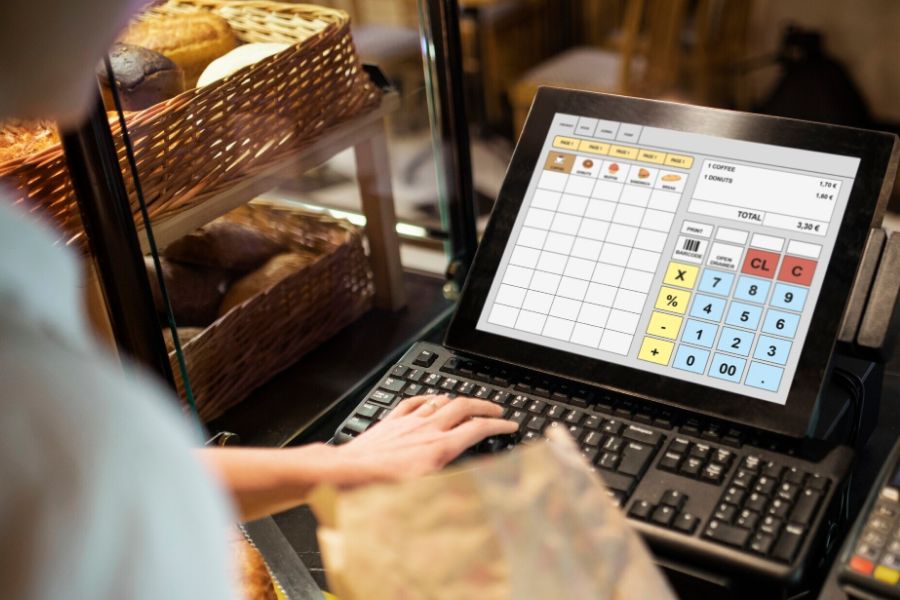In the fast-paced world of retail, efficient management of inventory is crucial for business success. One key aspect of inventory costing is the Point of Sale (POS) system, which plays a vital role in tracking sales, stock levels, and associated costs.
This post will delve into some of the common inventory costing methods used in the system POS retail industry, exploring their features, benefits, and considerations. By understanding these methods, retailers can make informed choices to optimize their inventory management processes and maximize their profitability.
Advantages of using POS systems for inventory management
Implementing an appropriate POS system retail for efficient inventory management is a strategic choice that holds immense value for businesses. Whether operating within the retail sector or any other industry involving product sales, utilizing a POS system for inventory management can result in significant cost savings, particularly for small businesses.
Minimize expenses related to inventory ordering
For small businesses, ordering costs constitute a significant portion of the overall expenses associated with holding inventory. To maximize profits, it is crucial for small businesses to effectively manage and minimize these ordering costs.
Such costs typically include wages and benefits allocated to the individual responsible for inventory orders, administrative expenses, and delivery costs. By providing timely information on when to reorder, a POS system aids in reducing ordering costs, ensuring optimal inventory management and improved profitability.
Save carrying costs
Carrying costs encompass the expenses incurred in storing inventory, which can vary significantly based on the nature of the product. Factors such as the need for specialized storage conditions and the physical size of the product contribute to the overall cost.
When excess inventory is held, storage costs can escalate, and there is also a risk of obsolescence, which can negatively impact business profitability. By facilitating efficient inventory management, a POS system helps mitigate these challenges, reducing carrying costs and preserving business profitability.
Offer perpetual and Just-in-Time inventory systems
A perpetual inventory tracking system captures and updates inventory balances following each transaction facilitated by POS inventory systems. This system provides the flexibility to access real-time inventory account balances whenever required.
On the other hand, the just-in-time (JIT) inventory system enables businesses to order inventory in line with actual demand, reducing the need for excess stock. Both inventory systems, whether perpetual or JIT, have the potential to minimize the expenses associated with ordering and carrying inventory.
Common system POS retail inventory costing methods
The retail inventory costing method
The retail method is utilized to calculate the ending inventory balance for retail stores by assessing the cost of inventory about the price of goods. Essentially, it aids in determining the portion of expenses to be recognized in the current period versus the subsequent period.
The retail method operates on the assumption that all inventory items have a consistent markup. Thus, you calculate the total value of the available merchandise, deduct the markup, and utilize that resulting figure as your cost.
The advantages and disadvantages of the retail method:
It is known for its simplicity in calculation and can be particularly useful in cases where inventory cost tracking is not well-established.
However, one major drawback of this system POS retail method is its generally lower level of accuracy, especially when dealing with fluctuating prices throughout the year (which is common for most retailers) and varying markups for different products.
The specific identification method
The specific identification method involves assigning a specific cost to each item in your stores. This approach is particularly suitable for retailers with a wide variety of items, especially when these items have been acquired from various sources.
The advantages and disadvantages of the specific identification method:
The benefits and drawbacks of the specific identification method depend on the size of your retail business, as stated by the Corporate Finance Institute (CFI). To effectively utilize the specific identification method, your retail business must be able to accurately and confidently identify the location, cost, and sale amount associated with each stock-keeping unit (SKU) in your inventory. The larger your business and its inventory, the more challenging this becomes.
The specific identification method is better suited to small businesses. It enables them to generate more precise profit and loss statements, providing reliable figures for income, losses, and typical inventory spoilage (such as accidental damage).
The First In, First Out (FIFO) method
When a business deals with a large quantity of nearly identical items, the specific identification method may not be worth the effort. In such cases, the First In, First Out (FIFO) method often proves to be more effective. FIFO assumes that the sale of an item is from the oldest available batch, which becomes relevant when the purchase prices of the items fluctuate.
The advantages and disadvantages of the FIFO method:
Implementing the FIFO method provides a highly accurate representation of your inventory, which can be advantageous, especially when purchasing batches of the same item at different prices. It typically aligns with real-world scenarios as older units of a stock-keeping unit (SKU) are typically sold before newer ones under ideal circumstances.”
However, there are drawbacks to consider. Tracking different costs associated with various batches of purchases within the same SKU requires more effort. For instance, if a particular shirt with a universal product code (UPC) was bought in three separate batches, tracking different costs for each batch becomes challenging compared to having a single cost for the entire UPC.
The Last In, First Out (LIFO) method
As its name suggests, the LIFO (Last In, First Out) method operates in contrast to the FIFO method. It attributes specific costs to individual items or batches based on their actual cost and reduces the cost as items are sold, starting with the most recently added items.
LIFO makes sense when it accurately reflects the reality of selling the newest items first while older items remain in inventory for an extended period. However, this system POS retail inventory costing method is not commonly used.
The advantages and disadvantages of the LIFO method:
LIFO is not suitable for every retailer, and its use is limited to the United States, as it is permitted under the Generally Accepted Accounting Principles (GAAP). In contrast, the International Financial Reporting Standards (IFRS) do not allow the utilization of the LIFO method outside of the US.
Despite these considerations, one of the main benefits of LIFO relates to taxation. Since LIFO results in a higher Cost of Goods Sold (COGS), it may help in reducing tax liabilities. However, consulting with an accountant or tax advisor is crucial to understanding the specific impacts of using the LIFO method.
In conclusion,
Choosing the appropriate system POS retail inventory costing method is crucial for retailers to manage their inventory effectively and optimize profitability. Whether it’s the retail method, specific identification, FIFO, or LIFO, each method has pros and cons that should be carefully evaluated based on the business’s specific needs and characteristics.
If you’re looking for eCommerce POS services and integration to streamline your inventory management and enhance your retail operations, we’re here to help. Contact us today to explore how our services can benefit your business and drive success in the ever-evolving retail landscape.
►►► See our products: Magento POS, BigCommerce POS, Shopify POS, Woocommerce POS, NetSuite POS, Commercetools POS, Custom POS, White label POS, Customer Experience Solution and Next-Gen POS




